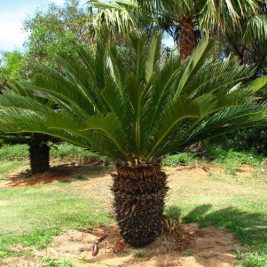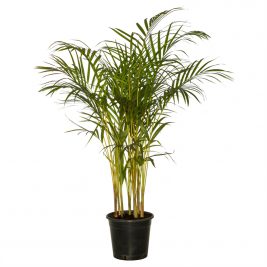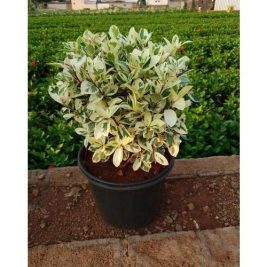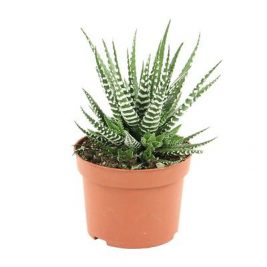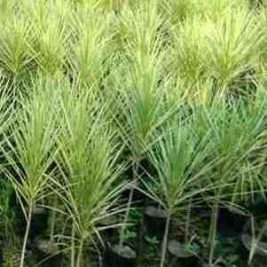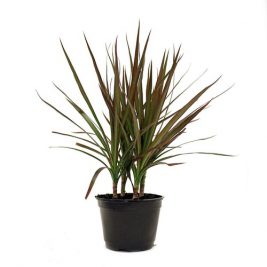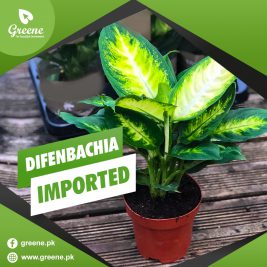Sorry, nothing in cart.
Home Plants
-
₨1,499
Height around 3ft- 4ft
16 inches pot
The Chinese fan palm, or fountain palm (Livistona Chinensis), is a hardy, slow-growing tree that derives its nickname from the fountain-like way its leaves droop down from the crown. Their leaves grow in circular, segmented fans, and develop spines when they’re young that they lose as they mature.
Chinese Fan Palm Care. Water: Water thoroughly then allow soil to dry slightly between waterings. Water less in winter when growth has slowed. Use filtered or distilled water because tap water may contain fluoride, chlorine and other chemicals that can damage palms.
-
₨1,400
Cycas revoluta, Sago palm, or Kangi Palm is a species of gymnosperm in the family Cycadaceae, native to southern Japan including the Ryukyu Islands. It is one of several species used for the production of sago, as well as an ornamental plant.
they are a little dangerous due to pointy ends of the leaves so precautions are required. Yet they they seem the best choice for a person who prefers the bold and the beautiful.
-
₨1,399
Pot Size: 16 inches
Wodyetia bifurcata, the foxtail palm, is a species of palm in the family Arecaceae, native to Queensland, Australia. It is the sole species in the genus Wodyetia.Foxtails are fast growers, reaching an ultimate height of about 30 feet. They’re best suited for Zone 10, though areas of Zone 9B that closely border Zone 10 will work with normal winter temperatures.
-
₨1,399
Height: 3 ft -5 ft
Pot Size : 12 inches
The Cane Palm is also known as golden cane palm, yellow palm, or butterfly palm. lutescens grows 6–12 m (20–39 ft) in height.The leaves are arched, 2–3 m (6 ft 7 in–9 ft 10 in) long, and pinnate, with 40-60 pairs of leaflets. It bears panicles of yellow flowers in summer.It is grown as an ornamental plant in gardens in tropical and subtropical regions, and elsewhere indoors as a houseplant.
-
₨1,300
Pot Size: 14 inches
Ficus is a genus of about 850 species of woody trees, shrubs, vines, epiphytes and hemiepiphytes in the family Moraceae. Collectively known as fig trees or figs, they are native throughout the tropics with a few species extending into the semi-warm temperate zone
-
₨999
Height : 2.5 ft- 3.5 ft
Yucca is a genus of perennial shrubs and trees in the family Asparagaceae, subfamily Agavoideae. Its 40–50 species are notable for their rosettes of evergreen, tough, sword-shaped leaves and large terminal panicles of white or whitish flowers. They are native to the hot and dry parts of the Americas and the Caribbean
-
₨999
They have clusters of thick, pointed green leaves with bumpy white lines in stripes around each leaf. Zebraplants are small, growing less than 6 inches tall.
Prefers full sun but will tolerate partial shade. The Zebra Cactus is among the desk plants that don’t need sunlight to do well.
-
₨799
Pot size: 16 inches
Dracaena (Dracaena marginata), also known as dragon tree, is an attractive, stiff-leaved plant with green sword-like leaves edged with red. The plant has narrow, slender gray stems that are topped with shiny, arching leaves that are sword-shaped.
-
₨799
Pot size 16 inches
Average Height: 2ft-3ft
Description: Dracaena marginata is widely used in home, office and commercial decor because it tolerates low light. Is a favorite specimen plant in many countries. Its tall snake-like trunk branches with age and can grow up to 3 m high. The basic species has narrowed, arching leaves, which are edged with red
-
₨699
Pot size: 12 inches
Croton is an extensive flowering plant genus in the spurge family, Euphorbiaceae. The plants of this genus were described and introduced to Europeans by Georg Eberhard Rumphius. The common names for this genus are rushfoil and croton, but the latter also refers to Codiaeum variegatum
-
₨699
Dieffenbachia is a genus of tropical flowering plants in the family Araceae. It is native to the New World Tropics from Mexico and the West Indies south to Argentina. Some species are widely cultivated as ornamental plants, especially as houseplants, and have become naturalized on a few tropical islands
-
Contact UsYou may connect with Team Greene at 0330-3450001
-
After SalesEven after Sales, Greene is there for you !!!
-
Return PolicyIf Product has a fault, Greene Returns *(T&C)

